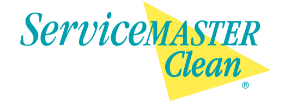According to the Centers for Disease Control and Prevention, diseases contracted inside US healthcare facilities account for almost 100,000 deaths each year. Because these environments are so contaminated, cleaning crews must develop best practices and guidelines which keep cleaners safe and produce exceptionally clean environments. When providing healthcare cleaning services it is critical that employees follow the proper safety precautions.
One of the biggest risks involved in these environments is cross contamination. Employees can avoid causing this by practicing hand hygiene and frequently changing gloves. Blood, body fluids, and other unidentifiable waste should always be treated as if it were contaminated with HIV, Hepatitis B, or other blood borne pathogens. As a general rule, it is recommended that those who work in these hazardous environments practice safe hand washing and injection practices. Hand hygiene is one of the easiest ways to defend against the spread of infectious material. This process will not only remove visible soiling from hands, but also prevent bacteria transfer and infections. This is achieved through hand washing, antiseptic hand wash, antiseptic hand rub, or surgical hand antisepsis.
These employees must also wear proper personal protective equipment, or PPE. PPE includes hand protection, face shields, dust masks, respirators, and protective clothing. If gloves or PPE come into contact with hazardous material it must be properly discarded of before performing the proper hand hygiene and putting on new PPE. To achieve the cleanest results, remove items in the following order when removing PPE: goggles, face shield, gown, mark, and respirator. Once these items are removed, hands should be thoroughly washed.
When hazardous materials are encountered, they must be disposed of in the proper receptacles. Waste should be disposed of immediately without being introduced to a new area. Hazardous waste specifically must be disposed of in red bag containers, with the exception of laundry which should be bagged separately and labeled according to OSHA regulations. Sharps require extra precautions as they must be handled with gloved hands and disposed of in appropriate containers. Some facilities may even require the reporting of any loose sharps which are found. Other safe work practices include keeping hands away from faces, working from clean to dirty, and avoiding touching surfaces.
Following these safety procedures will ensure that not only will the healthcare environments be more sanitary for employees and guests, but also that the janitorial staff will be protected. Stay tuned for tips and tricks, industry developments, and company highlights. Next week, our blog will discuss the steps staff members should follow when cleaning.

